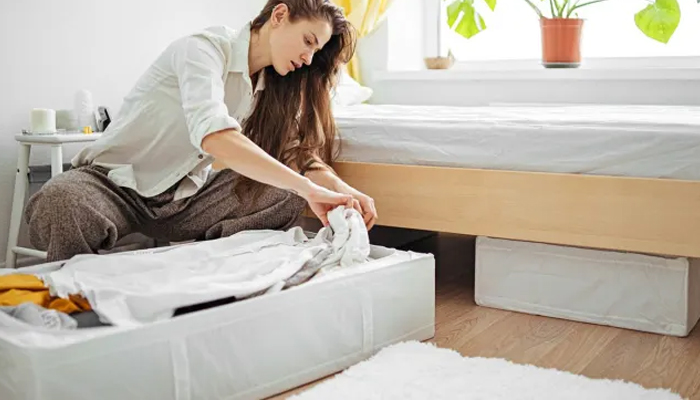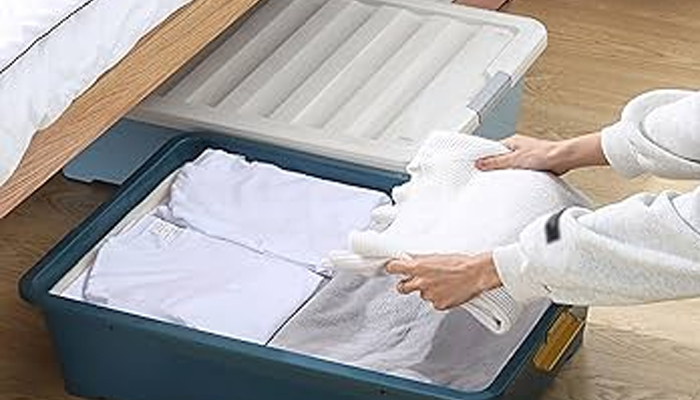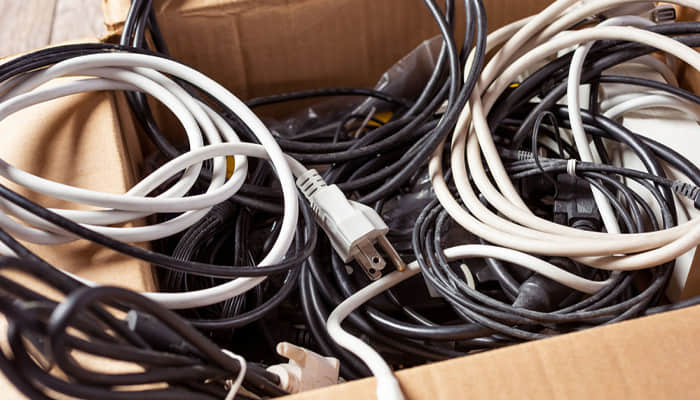
We all want a clean, clutter-free home. But when storage space runs low, under the bed can seem like the perfect hiding spot. Out of sight, out of mind—right? Not quite. While shoving things under the bed might make your room look tidier, it could be quietly creating problems for your health and home.
From triggering allergies to inviting pests, that dark space under your mattress might be doing more harm than good. Let’s take a closer look at what’s really happening under there—and why you might want to rethink what you’re storing.
1.Dust Bunnies Love Darkness and Stillness
Under-bed spaces are rarely cleaned. They’re dark, tight, and often hard to reach. That makes them perfect breeding grounds for dust buildup. If you’re storing cardboard boxes, bags of clothing, or anything made of fabric or paper, it’s even worse—these materials trap dust and release fibers.
For people with allergies or asthma, this is a serious concern. The dust under your bed isn’t just dirt—it’s a mix of dead skin cells, pet dander, pollen, and dust mites. Every time you toss and turn in bed, those tiny particles get stirred up and enter the air you breathe.
2.Fabric and Paper Attract Pests Like Moths and Silverfish

Have you ever stored out-of-season clothes under the bed? Maybe extra blankets or books? Unfortunately, many insects are drawn to exactly those kinds of materials. Silverfish love paper and glue. Moths target wool and cotton. If you leave these items untouched for months, you’re giving bugs a cozy home.
Even if you don’t see the pests, they may still be there—nibbling away slowly. Holes in clothes, yellow stains, or little pepper-like droppings are telltale signs that someone’s been snacking on your belongings.
3.Plastic Storage Bins Aren’t Always a Solution
You might think using sealed plastic bins solves the problem—but it only helps partway. Yes, they reduce dust and deter bugs. But if you pack them tightly and never move them, they still block airflow, allowing musty odors and moisture to build up.
Plus, if the bins are filled with rarely used items (think holiday decorations, old magazines, or decades-old keepsakes), they still contribute to clutter—even if you can’t see it. In the end, they’re just hidden stress.
4.Cluttered Under-Bed Spaces Disrupt Sleep Energy

Whether you believe in feng shui or not, there’s truth to the idea that clutter affects your mind. When your bedroom holds too much visual noise—or hidden clutter—your sleep can suffer. An overstuffed room, even if “neatly hidden,” can feel chaotic.
Many people report better sleep and less mental fatigue after decluttering their spaces. It’s not just psychological. Dust and allergens under your bed can literally affect your breathing and disrupt restful sleep.
5.Shoes and Bags Carry Outdoor Grime Inside
Another common habit? Tossing shoes, gym bags, or backpacks under the bed. It’s fast, easy—and it keeps the room looking clean. But those items often carry dirt, pollen, pesticides, and germs from outside.
Storing them in an enclosed, low-airflow space gives all that grime a chance to settle and spread. Worse yet, some insects—like cockroaches—are attracted to the sweat and food residues often found on these items. A forgotten snack wrapper in a gym bag can become a bug buffet.
6.Stale Air Equals Musty Smells

Have you noticed a musty smell when you get into bed or change your sheets? The under-bed area might be to blame. When cluttered with boxes, bags, or forgotten items, this space becomes a trap for stale air.
Without airflow, moisture from the floor or air can get trapped—especially in humid months. That leads to mildew, odors, and in some cases, even mold growth. You might not notice it right away, but over time your room starts to feel less fresh and more… off.
7.Pet Hair and Litter Dust Settle There Too
If you have pets, chances are they love hanging out under your bed. It’s a cozy hiding place for cats, a cool retreat for dogs, and a dusty cave for pet hair to collect. If you use cat litter in the same room, the fine dust from litter can also make its way under the bed.
Even if your furry friend doesn’t hide there, their hair floats around—and under-bed spaces are magnets for it. That means more allergens, more vacuuming, and more sneezing.
8.Old Electronics Leak Chemicals

Do you have old cords, laptops, or broken gadgets stashed under the bed, “just in case”? Electronics contain materials like lithium, lead, and flame retardants. Over time, these can degrade and release harmful chemicals into the surrounding air.
This is especially risky in a room where you sleep, breathe deeply, and spend several hours every night. If those old devices aren’t serving a purpose, it’s best to recycle or safely dispose of them.
9.Under-Bed Storage Can Worsen Back and Knee Pain
It’s not just about dust and bugs—accessing under-bed storage can be physically awkward. If you’re bending, kneeling, or crawling every time you need something, you may be putting unnecessary strain on your body.
Many older adults report discomfort or minor injuries from trying to retrieve items from tight spaces. If something’s important enough to use regularly, it shouldn’t live under your bed. And if it’s not being used, why keep it?
10.Tightly Packed Spaces Make Cleaning Nearly Impossible

Let’s be honest—how often do you vacuum under your bed? And how easy is it, really, when it’s filled with containers, baskets, or stray items? Once things start piling up, it becomes harder and harder to keep clean.
That makes it easy for cobwebs, dust, or even spiders to settle in. And the longer you ignore it, the more unpleasant the surprise when you finally take a peek. Regular, easy cleaning should always be part of your home routine—and that starts with accessible spaces.
11.A Better Approach: Clear and Breathe
Your bedroom should be your sanctuary. If you can, keep the area under your bed clear. Let it breathe. Use vertical storage, closet organizers, or shallow drawers elsewhere. If you absolutely must use under-bed storage, limit it to sealed bins with wheels—and pull them out to clean underneath every month.
Small changes like this can make a big difference in your sleep quality, air freshness, and peace of mind.
